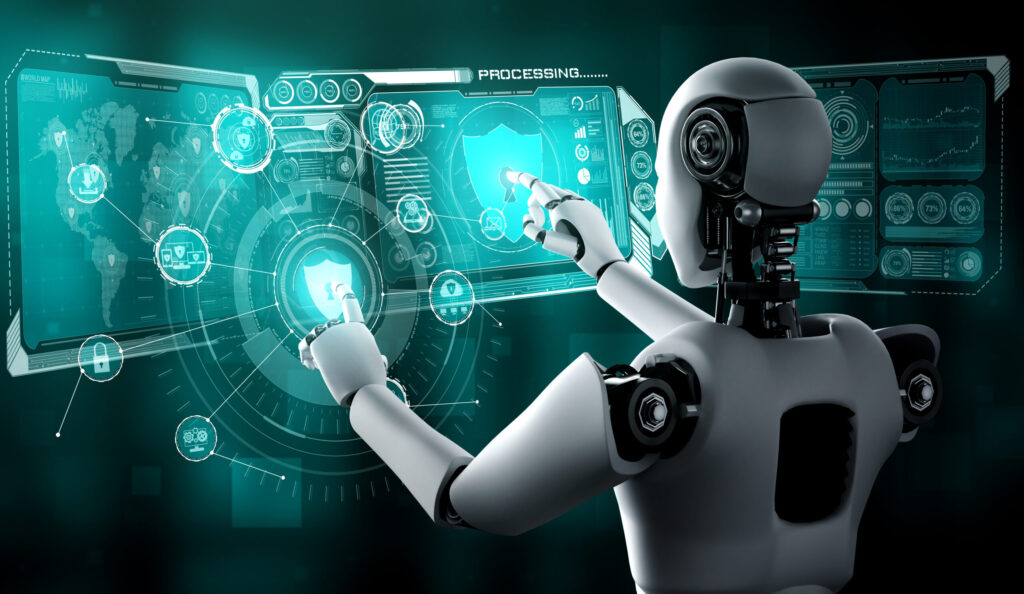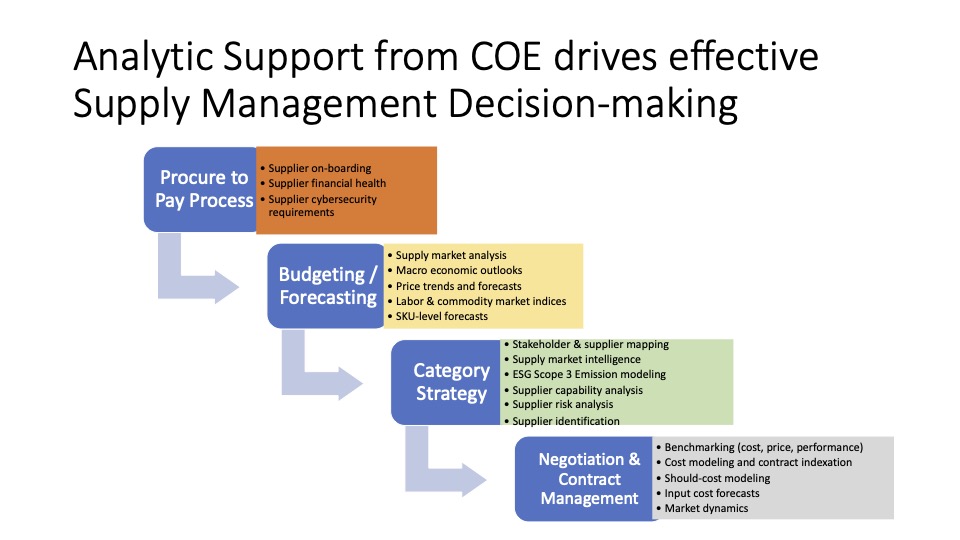What areas of SCM are best suited for the application of AI?
Many of the managers I speak with are buying into the application of artificial intelligence in the workplace, but often struggle to identify specific processes that are best suited for AI. I hear of lots of people using Gamma, ChatGPT, Claude, and other platforms on a one-off basis to answer a question or settle a bet, but the formal integration of AI in work flows is in its infancy. This will be changing soon.
Most of the activity that occurs behind the scenes at all stages of the supply chain involves human activity, processing transactions on screens and Excel sheets. Today, there are few efficiencies to wring out of the four walls of manufacturing plants, but massive white space opportunities in the daily activities that supply chain planners, buyers, and contract officers undertake. This is where the opportunities lie ahead. By applying technologies like Generative AI, organizations will be able to drive efficiencies in the way we work that will create trillions of dollars in economic value, by reducing working capital, increasing agility, and reducing waste, while making better decisions based on data and analytics, not on gut feel. By making routine tasks repeatable in workflows, managers have the opportunity to really speed up their work, leaving them more time for brainstorming, TCO analysis, and opportunity assessment for activities that can really make an impact. This is particularly true during a period when tariffs are creating all kinds of vulnerabilities, and stress testing of supply chains requires deep thinking of creative ways to deal with these disruptions.

One executive we interviewed began by emphasizing that AI is only one tool in a host of many technologies that are part of Digital Transformation which is underway in many industries. Artificial Intelligence includes very specific technologies: Natural Language Processing, Machine Learning, Generative AI, but also Expert Systems, and Bots. The latter two have been around for many years. Bots are technologies that can grab an API key and follow a command. (An API is an Application Programming Interface, a set of rules that allows software applications to communicate with one another.). But we are now seeing that Bots are being mixed with other forms of AI – for instance, a Bot might grab spend data and then a Large Language Model would use that data to provide suggestions on opportunities. The retrieval and processing of the information is like a thought process, only the manifestation of the information provided is different.
There are many other components to the digital transformation underway: technologies such as Block Chain, Internet of Things, Edge Computing, Big Data, Mobile Apps, Virtual Reality / Augmented Reality, Digital Twins, Digital Engineering and Cloud Computing, which are all part the movement from analog to a digital transformation.We will also need new skills: specifically, Digital literacy will need to improve, which concerns the skills required to effectively use and engage with digital technologies and media. Data literacy, on the other hand, refers to the ability to read, work with, analyze, and argue with data. It is a more specialized skill set that focuses on the critical thinking and technical abilities needed to handle data effectively.
When it comes to mapping a pathway for digital transformation, organizations seeking to build an AI strategy will have to address four primary areas of concern (identified by my colleague Dan Finkenstadt):
- Could We? – Technical Feasibility and Validation. This is an assessment of whether our organization has the capabilities to adopt AI.
- Should We? – Ethical and Societal Considerations – is this the right approach, especially considering that technologies like Generative AI are inherently biased, as the source materials are often not documented. The problem is that the data that AI is trained on is often not representative of the entire population, and hence is inherently biased.
- Would We? – Alignment and Value Generation – is there tangible value to be gained from the technology, and if so, how do we measure it?
- If We?… – Responsible and Effective Execution. People are nervous without thinking about what we might not want to do… it is not a neutral impact – if we don’t use it, will we be passed over? But can we also overuse the technology, and risk the possibility of ruining our brand if we use it for something we shouldn’t.
When asked about the greatest potential use of AI in managing all supply chain processes, respondents to a recent survey we worked on with GEP opined that the biggest opportunity is in supplier management, followed by risk management, and demand planning and forecasting. Customer engagement is the least likely to be addressed using AI, as having real people meeting with customers is essential. AI has the potential to rapidly improve the P2P process, by eliminating routine work, reducing invoices and acknowledgements, and creating direct purchasing in the hands of all associates.
Supplier Management – Many of the activities involved with on-boarding suppliers, identifying new potential suppliers, conducting supply market intelligence, building supplier measurement systems. Other activities involve supplier segmentation, sharing material forecasts with suppliers, and coordinating logistics and operational scheduling.
Risk Management – Monitoring different events that could disrupt supply chains is an ideal application of AI. This involves scanning for different events, and identifying the impact on different product BOM’s. Many different factors need to be monitored, including supplier dependency, geopolitical, financial health, natural disasters, supplier performance, commodity fluctuations – cyber security, compliance and regulations. Tariffs coming out of the US, how will that impact us? We have to look at tier 1, 2, 3 levels.
Challenges with AI
One of the biggest challenges I hear from managers are the worries around security risks. One advanced company is loath to use any AI in their operations, for fear of cyber threats and hacks. Another risk is the source of the data. Some AI platforms employ sources that have little veracity, and thus may not provide reliable information. Lack of training and unwillingness to change ways of working is another challenge. Many managers rely on trusted Excel spreadsheets, and this type of digital transformation will require significant training. In particular, associates will need to learn how to query AI platforms, by asking the right questions that are relevant to the problem at hand. Early research shows that this is not always intuitive for many users. Finally, AI has also been known to produce “hallucinations”, which provide incorrect data. This is another challenge that has yet to be addressed in workflow.
Despite these challenges, we are going to see the workplace change…. a lot!


